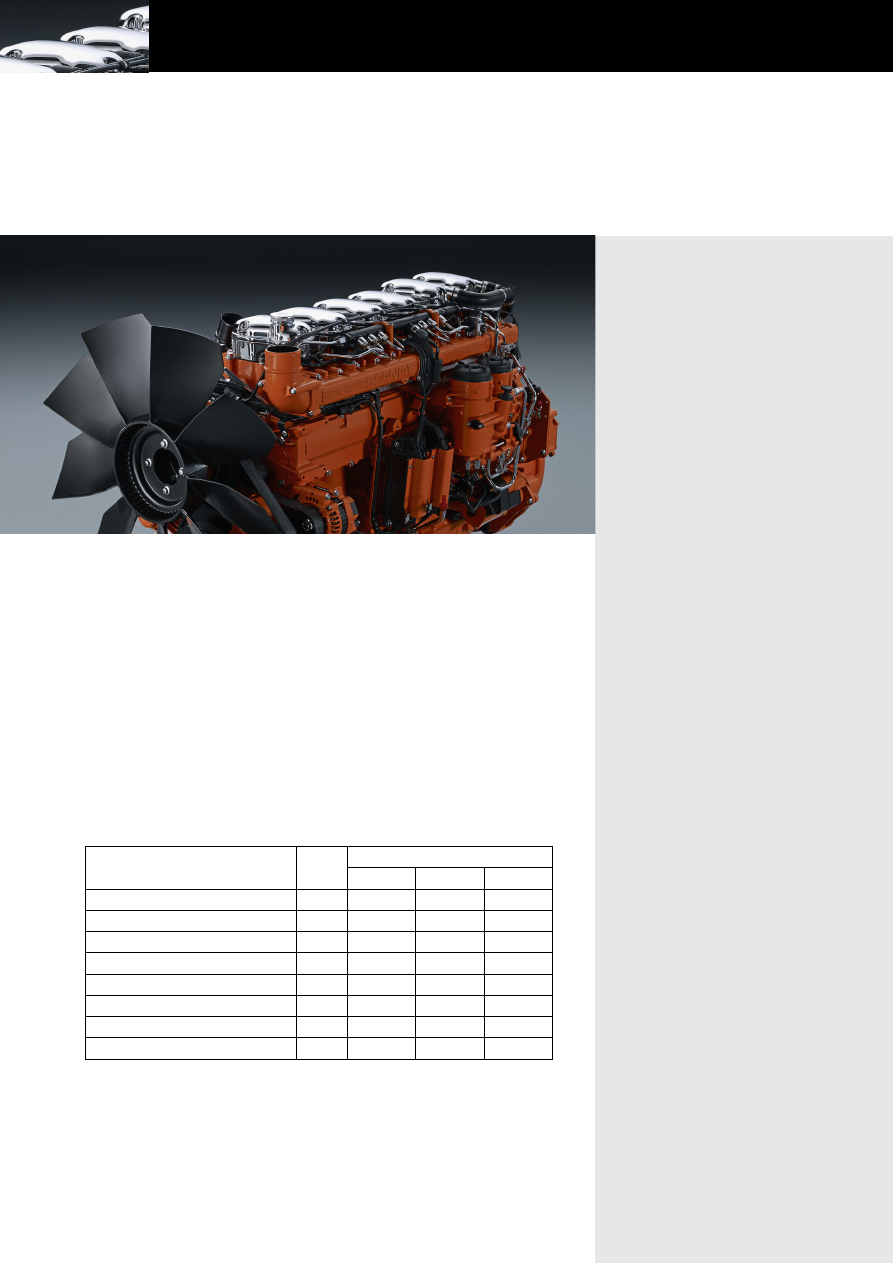SCANIA INDUSTRIAL ENGINES (specification) - part 7

SCANIA industrial engines
dC13 081a. 283 kW (385 hp)
eu stage iiiB
Standard equipment
• Scania Engine Management System, EMS
• Extra high pressure fuel injection system, XPI
• Turbocharger
• Fuel filter and extra pre-filter with water
separator
• Fuel heater
• Oil filter, full flow
• Centrifugal oil cleaner
• Oil cooler, integrated in block
• Oil filler, in valve cover
• Deep front oil sump
• Oil dipstick, in block
• Magnetic drain plug for oil draining
• Starter, 1-pole 6.0 kW
• Alternator, 1-pole 100A
• Flywheel, for use with friction clutch
• Silumin flywheel housing, SAE 1 flange
• Front-mounted engine brackets
• SCR system
• Open crankcase ventilation
• Operator’s manual
Optional equipment
• Cooling package
• Puller and pusher fans
• Fan ring with sealing
• Hydraulic pump
• Air compressor
• AC compressor
• Side-mounted PTO
• Front-mounted PTO
• Exhaust connections
• Electrical base system
• Control and instrument panels
• Accelerator position sensor
• Engine heater
• Flywheels: SAE11.5”, SAE14”, DANA15/16”,
ZF WG260
• Stiff rubber engine suspension
• Air cleaner
• Closed crankcase ventilation
• Studs in flywheel housing
• External thermostat for extra oil cooler
• Low coolant level reaction
• Variable idle speed setting
• Low oil sump
• Oil level sensor
The industrial engines from Scania are based on a robust design with a strength
optimised cylinder block containing wet cylinder liners that can easily be exchanged.
Individual cylinder heads with 4 valves per cylinder promotes repairability and fuel
economy.
The engine is equipped with a Scania developed Engine Management System,
EMS, in order to ensure the control of all aspects related to engine performance.
The injection system is Scania’s XPI (Extra High Pressure Injection), a common rail
system that in combination with SCR (Selective Catalytic Reduction) gives low exhaust
emissions with good fuel economy and a high torque. The engine can be fitted with
many accessories such as air cleaners, silencers, PTOs and flywheels in order to suit
a variety of installations.
This specification may be revised without notice.
Engine speed (rpm)
Rating
1200
1500
1800
Gross power (kW)
ICFN
219
272
283
Gross power (hp, metric)
ICFN
298
370
385
Gross torque (Nm)
ICFN
1746
1730
1501
Spec fuel consumption. Full load (g/kWh)
181
184
196
Spec fuel consumption. 3/4 load (g/kWh)
183
184
197
Spec fuel consumption. 1/2 load (g/kWh)
190
193
206
Reductant consumption. Full load (g/kWh)
24
18
15
Heat rejection to coolant (kW)
24
18
15
ICFN – Continuous service: Rated output available 1/1 h.
Unlimited h/year service time at a load factor of 100%